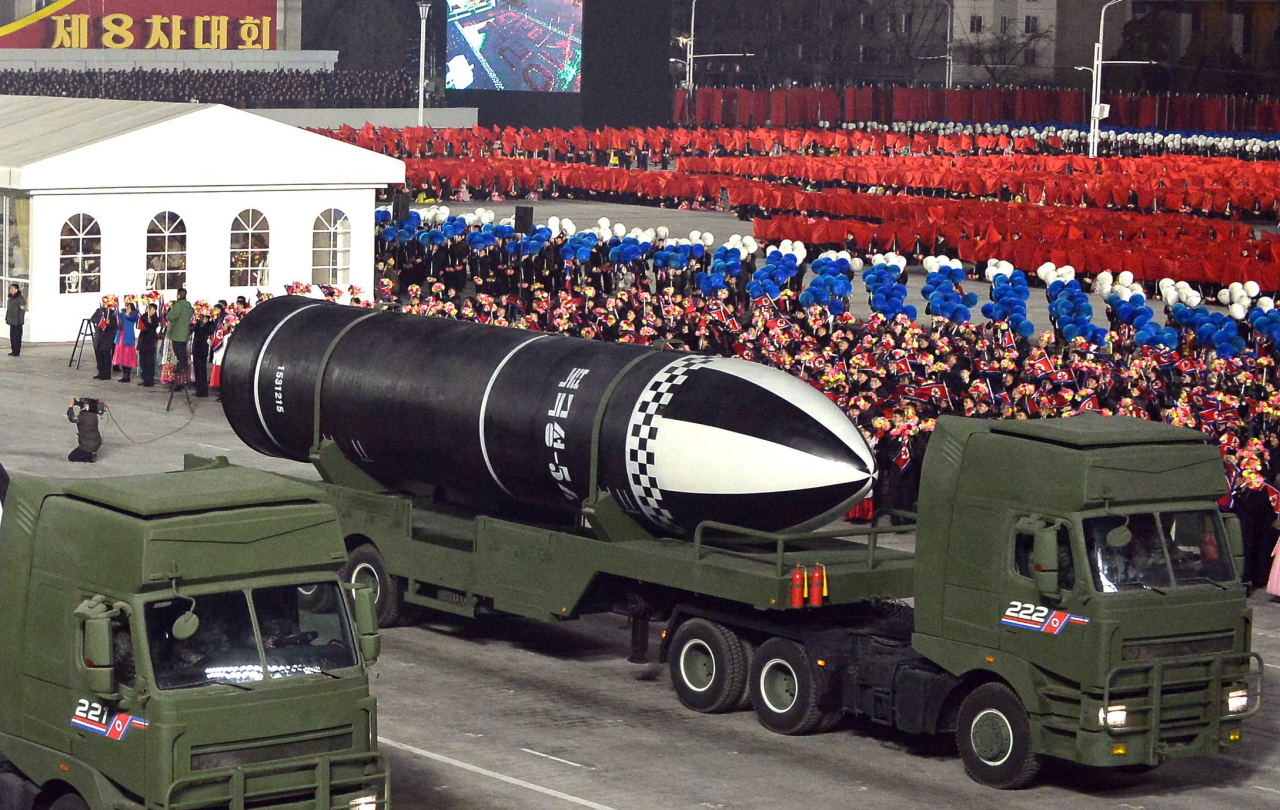 |
This photo released by North Korea's Korean Central News Agency shows submarine-launched ballistic missiles displayed during a military parade held in Pyongyang on Jan. 14, 2021. (KCNA-Yonhap) |
North Korea has been expanding missile development facilities, but has shown no unusual signs at its demolished nuclear testing site or its long-suspended plutonium-producing reactor, the defense ministry said Wednesday.
The assessment was made in a report the ministry presented to the National Assembly's defense committee for a policy briefing session.
"No special movement has been spotted since May 24, 2018, when the North demolished the Punggyeri nuclear test site. The 5-megawatt nuclear reactor at the Yongbyon nuclear complex has long been suspended," the ministry said, referring to the North's main source of weapons-grade plutonium.
"North Korea has been expanding facilities for missile research and development," the ministry added.
Amid stalled denuclearization talks with the United States, the North has been working to beef up its missile and other conventional weapons.
Several new types of ballistic missiles have been unveiled since 2019, including its version of Russia's Iskander, and the US' Army Tactical Missile System (ATACMS), as well as advanced submarine-launched ballistic missiles (SLBMs).
"By unveiling new ballistic missiles and new SLBMs, the North seeks to show off its defense capabilities and to raise the pride of the regime," the report read.
The ministry also said that North Korea has heightened its ground and maritime defense posture near borders since late last year, and carried out regular military trainings.
"To prevent accidents and curb the spread of the pandemic, troops are conducting the drills at around where they are stationed," according to the report.
South Korea has been closely monitoring the North's military movements and maintains a firm readiness posture, the ministry said, vowing to take strong measures against possible provocations.
During the briefing, the ministry once again stressed its push for the swift retaking of the wartime operational control (OPCON) of its troops from the US.
Seoul and Washington are working for the conditions-based OPCON transfer. No exact timeframe has been set, though the current Moon Jae-in administration has hoped to retake OPCON within Moon's term that ends in May 2022.
"Active consultation is under way with the US to carry out an FOC test during the (upcoming) combined exercise," the report read.
The Full Operational Capability (FOC) test, which is meant to check if Seoul is on course to meet the conditions for the transition, was supposed to be held last year, but the two sides were not able to do so due to the COVID-19 situation.
Asked whether the exercise could be postponed or scaled back to move forward inter-Korean ties, Defense Minister Suh Wook said it will be held as planned.
"South Korea-US Combined exercises are like a symbol of the alliance and the backbone of our combined readiness posture," Suh said, noting that the two sides are planning to begin the program in around the second week of next month.
"As for its scale and other details, we will consider the COVID-19 situation and related factors," he added.
North Korea has long denounced such exercises as a rehearsal for invasion and demanded an end to such drills. Last month, leader Kim Jong-un repeated the call, hinting at the possibility of better inter-Korean ties once such issues are resolved. (Yonhap)




![[Herald Interview] 'Trump will use tariffs as first line of defense for American manufacturing'](http://res.heraldm.com/phpwas/restmb_idxmake.php?idx=644&simg=/content/image/2024/11/26/20241126050017_0.jpg)

![[Health and care] Getting cancer young: Why cancer isn’t just an older person’s battle](http://res.heraldm.com/phpwas/restmb_idxmake.php?idx=644&simg=/content/image/2024/11/26/20241126050043_0.jpg)

